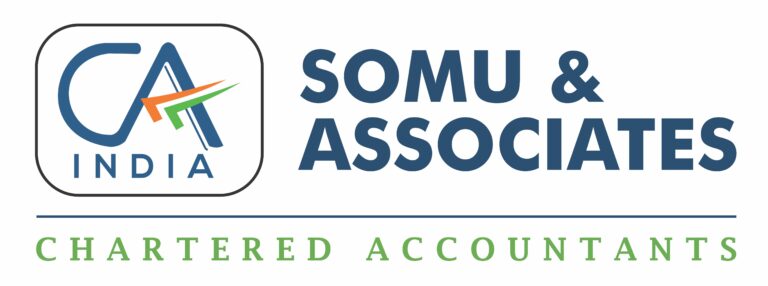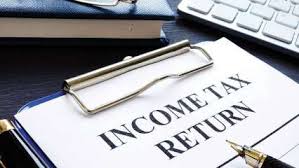FAQs on New Tax Regime Vs Existing Tax Regime
New Tax Regime
Budget 2020 introduced the new tax regime where the Individual and HUF has to declare the choice at the time of filing of the income tax return from FY 2020-21
The New Tax regime has lower tax rates in comparison to the existing Tax regime. However, the New Tax Regime removes most tax deductions and exemptions. It is optional.
Section 115BAC: Income Tax Slabs under the New Tax Regime for all Individuals/HUF for FY 2024-25 (AY 2025-26)
The below tax rates are also applicable even to senior citizen and super senior citizen. Individual/HUF may be resident or non-resident. Individual may be salaried/retired employee (having salaried income) or a self-employed person (having business income) or any other person (having any other income).
Income Tax Slab Income Tax Rate
Upto Rs.3,00,000 NIL
Rs.3,00,001 Upto Rs.6,00,000 5%
Rs.6,00,001 Upto Rs.9,00,000 10%
Rs.9,00,001 Upto Rs.12,00,000 15%
Rs.12,00,001 Upto Rs.15,00,000 20%
Above Rs.15,00,000 30%
How much is the Rebate Allowed u/s 87A?
If an individual’s total taxable income is up to Rs. 7,00,000/- and they choose the new tax regime, they will be eligible for a rebate of the lower of the following:
a) An amount of income tax payable on their total income, or
b) An amount up to Rs 25,000.
Marginal Tax Relief under the New Regime
Under the new tax regime, an additional rebate is available for individuals with a total income just above Rs.7,00,000/-. If the income of an individual exceeds Rs.7,00,000 and the tax payable on such income exceeds the amount by which their income exceeds Rs. 7,00,000/-, then the tax will be limited to the extent of the excess income over Rs.7,00,000/-
The rates of Surcharge under the two tax regimes are as under:
If Net Total Income Old Tax Regime New Tax Regime
> 50 Lakhs Upto 1 Crore 10% 10%
> 1 Crore Upto 2 Crore 15% 15%
> 2 Crore Upto 5 Crore 25% 25%
> 5 Crore 25% 37%
Note: The enhanced surcharge of 25% & 37%, as the case may be, is not levied, from income chargeable to tax under sections 111A, 112, 112A and Dividend Income. Hence, the maximum rate of surcharge on tax payable on such incomes shall be 15%, except when the income is taxable under section 115A, 115AB, 115AC, 115ACA and 115E.
Default Regime from FY 2023-24 (AY 2023-24)
Starting from FY 2023-24, the New income tax regime will be set as the default option. If you want to continue using the old regime, you must submit the income tax return before the due date. You will have the option to switch between the two regimes annually to check the tax benefits.
Whether Employees can choose option at the beginning of financial year?
Yes, The Income Tax Department clarification enables employees to intimate their choice to the employer at the beginning of the Financial Year. Once declared, the employer is bound to calculate and deduct tax as per option provided by employee.
However, if an employee does not intimate a choice of the tax regime, the employer can continue to follow the New regime and deduct tax (TDS) accordingly.
Whether option can be changed at the time of filing of IT Returns?
Yes, irrespective of the declaration to Employer, an employee has an option to change at the time of filing of their Income Tax Returns. However, as a result of this you may be liable to Pay Tax or Entitled for Refund
Compliance Requirement for Section 115BAC
Form No. 10-IEA as a mandatory compliance before opting for old tax regime and it should be filed before due date of filing Tax Return
The Income Tax Department has notified that the option to opt for the new tax regime will be available for the taxpayers filing return of income in ITR-1 or ITR-2 in the return itself. Form 10-IEA should be filed mandatorily by the Assesses who are filing return in ITR-3 or ITR-4 only (i.e with business Income), in addition to opting for the old taxation regime in the ITR.
List of exemptions/deductions and their applicability in both tax regimes.
Deduction Type Existing Tax Regime New Tax Regime
Standard Deduction of Rs. 50000 Yes Yes
Professional Tax deducted from Salary Yes No
Exemptions under Section 10 & 17 Existing Tax Regime New Tax Regime
House Rent Allowance Yes No
Gratuity Yes Yes
Leave Encashment Yes Yes
Children Education Allowance Yes No
Leave Travel Allowance Yes No
Uniform Allowance Yes No
Housing/Other Income Existing Tax Regime New Tax Regime
Other Income (Bank Interest, NSC Interest etc.) Yes Yes
Interest on Housing Loan – Self Occupied Yes No
Income from House Property Income – Let Out Yes Yes
Loss from House Property Income – Let Out Yes No
Interest on Housing Loan – Additional Exemption (80EE & 80EEA) Yes No
Chapter VI-A Existing Tax Regime New Tax Regime
Medical Insurance Premium (Sec 80D) Yes No
Deduction towards Handicapped Dependents (Sec 80DD) Yes No
Deduction towards treatment of Specified Diseases (Sec 80DDB) Yes No
Interest Paid on Higher Education Loan (Sec 80E) Yes No
Deduction for Permanent Disability (Sec 80U) Yes No
Employer’s contribution toward NPS (up to 10%)(u/s 80CCD) Yes Yes
Interest on deposits in Saving bank accounts (80TTA) Yes No
Deduction in respect of Interest income (80TTB) for Senior Citizen Yes No
Exemption on Loan for Purchase of Electric Vehicles (80EEB) Yes No
Deductions Under 80C Existing Tax Regime New Tax Regime
Employees Provident Fund Yes No
Voluntary Provident Fund Yes No
Public Provident Fund Yes No
Children’s Education – Tuition Fees Yes No
National Savings Certificate (NSC) Yes No
Life Insurance Premium Yes No
Housing Loan Principal Repayment Yes No
Sukanya Samriddhi Scheme Yes No
Accrued NSC Interest Yes No
Mutual Funds / ULIP Yes No
Deduction under Life Insurance Pension Scheme Yes No
Employees contribution towards NPS Yes No
Senior Citizens Savings Scheme Yes No
Tax Saver Fixed Deposits / Term Deposits / Senior Citizen Saving Scheme Yes No
Investment in Infrastructure /tax saving bonds Yes No
Flexi Benefits Tax Free
Pay Components Existing Tax Regime New Tax Regime
Leave Travel Allowance Yes No
Children Education / Hostel Allowance Yes No
Professional Developement/ Research Allowance Yes No
Gift Vouchers (up to 5000) Yes Yes
Internet & Telephone Reimbursement Yes Yes
Fuel Reimbursement Yes Yes
Driver Salary Yes Yes
Car Maintenance / Insurance Yes Yes
Free Meal/Food Coupon Yes No
Section 115BAD: New Tax Rate for Co-operative Society
As per this section, the Co-operative Society have an option to opt for new tax regime under which tax at the rate 0f 22% can be charged in the place of existing tax rate of 30% but subject to sacrificing the following allowances or deductions:
1) Deduction u/s 10AA or 32(1)(iia) or 33AB or 33ABA or 35AD
2) Deduction for Investment allowance u/s 32AD
3) Chapter VI-A deduction (80C,80D, 80E and so on) (Except 80JJAA)
4) Exemption or deduction for any other perquisites or allowances
5) Without setting off any loss carried forward or unabsorbed depreciation of earlier year
6) No Additional Depreciation u/s 32(2) allowed
Compliance Requirement for Section 115BAD
Form No. 10-IFA is to be mandatorily filed before opting for old tax regime and it should be filed before due date of filing Tax Return


